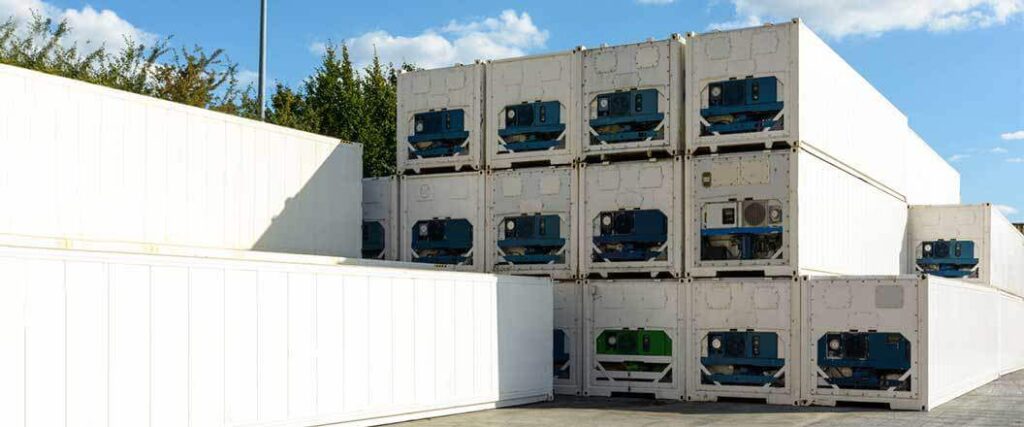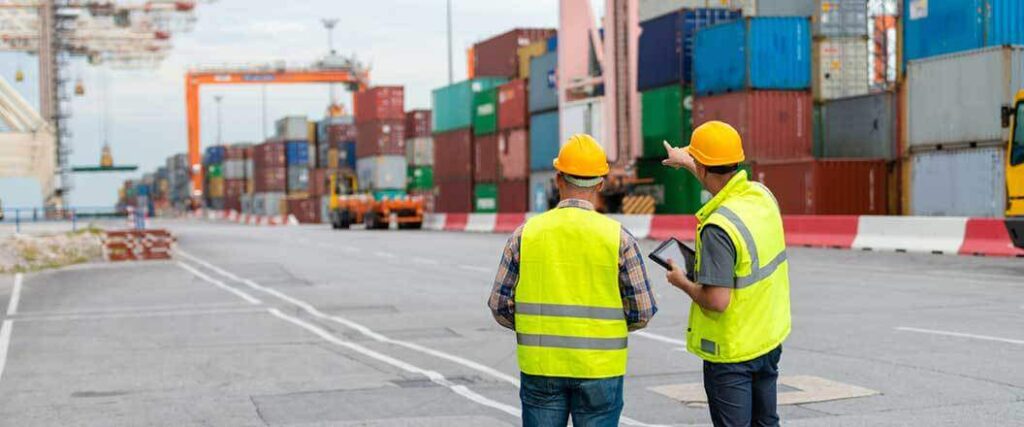International temperature controlled shipping is not just an option, but a necessity in today's global marketplace. Think of it: those plump kiwis on your breakfast table, the life-saving vaccine at your doctor's clinic, or that exquisite French cheese in your favorite deli. They all rely on the cold chain to maintain their quality, effectiveness, and freshness.
As the Global Cold Chain Alliance (GCCA) emphasizes, long-distance refrigerated shipping presents three major hurdles. First, the need for constant temperatures no matter the climate. Second, overcoming equipment failures or malfunctions. Last is ensuring compliance to diverse international regulations. Each challenge demands careful planning and expert handling.
Navigating different climates, time zones, and regulations is doable, but it demands the right partner and know-how. Thankfully, you’ve come to the right place.
Temperature controlled shipping is not a new concept. The cold is a natural preservative, so people have been trying to make it portable for a couple of hundred years. With globalization and the ever-increasing demand for a variety of fresh goods, its importance is growing every day.
Not to mention, the various other industries that rely on cold chain logistics at a global scale. Just think about the potential problems of not having structured cold shipping services.
Without well managed cold shipping, we face the following consequences:
Though it’s easy to forget about, the truth is that people everywhere rely on these services in their daily lives.
In basic terms, international temperature controlled shipping is a form of logistics that involves maintaining specific temperature ranges during extended travel times.
It’s true that international doesn’t always mean long-distance. After all, a truckload of produce from Mexico can arrive to the continental U.S. in just a few days. The same can be said for products coming from Canada.
However, the U.S. also imports and exports cold chain products on a global scale. While some travels by aircraft, most travels by ship. Unlike freight that travels in a plane, a transition measured in hours, vessel transport can take weeks.
For the purposes of this article, we’ll examine the needs and logistics of international temperature controlled shipments that need to travel across the ocean, whether by plane or vessel.
There are a number of ways that refrigerated shipping is different from standard shipping, especially at the international level.
While there are dedicated refrigerated ships, their numbers are limited. The sheer volume of goods means that refrigerated units are often traveling on standard container ships.

Temperature monitoring is typically a big part of complying with the best practices that guide regulations on reefer shipping. Refrigerated shipping isn’t just about keeping something cold, it’s about keeping things at very specific temperatures.
At times, this can also mean keeping something at high temperatures.
Consider the wide variety of goods across different industries we’ve mentioned:
Each of these products has a different optimal temperature. Even the label ‘fresh’ carries different meanings. Fresh can mean room temperature, usually between 68 and 72 degrees Fahrenheit. It can also mean to keep things chilled just above freezing, anywhere between 34 and 40 degrees Fahrenheit.
There are also different levels of frozen products. For example, frozen meat is only acceptable in most countries if it has been continuously maintained at -4 degrees Fahrenheit (-20 Celsius). Although the threshold for freezing is just 32 degrees Fahrenheit, international regulations mean having a wide safety margin.
Within the pharmaceutical industry, you have similar situations. There are medications and vaccines that need to be prevented from freezing. Others can only be transported while frozen.
When the vaccines for COVID-19 began circulating, the recommended temperature was -94 degrees Fahrenheit. That’s even colder than the temperatures found at the Earth’s poles.
In other words, keeping exact temperatures is critical to making sure that the goods not only stay in the best condition possible, but also to make sure they are actually accepted at their destination.
A successful international shipping system for reefer freight needs the right technology and equipment. The goal is sustained temperature control.
To that end, the most important aspects of refrigerated shipping are:
The process of prepping and taking on refrigerated shipments internationally doesn’t differ too much from doing so domestically by truck. Sensitive goods should always be carefully prepared to handle a long journey.
While it’s more challenging to maintain a desired temperature over longer distances, the techniques are the same. Refrigerated trucks are exchanged for reefer cargo containers that work the same way.
To insulate for longer distances, a shipper may recommend something slightly more advanced than styrofoam, or at least not only that material. Gel packs are often used in combination with refrigerated units and basic insulation. If a reefer unit were to fail, gel packs may be able to keep the required temperature stable. It’s a backup until repairs are made, or the materials reach their destination.
Unique to international reefer shipping is the need to pass through international customs. No matter where you’re shipping products to, reefer products are going to be looked at more closely.
Passing international customs with reefer cargo includes the following steps:
If you’re the buyer, the last step is your responsibility. Always have a plan in place locally so that the transfer process is as seamless as possible.
Reefer shipments do come with more risk than standard imports or exports. That said, there are advantages to either expanding into the cold chain market or using the technology to ship various kinds of sensitive goods.
On the one hand, using refrigerated units to preserve the quality of goods, even non-perishables, can build up your reputation:
A business with a strong reputation for delivering quality products in excellent condition can leverage it for profits. Customers may be willing to pay more for products coming from a company they can trust. Those profits can help offset the slightly higher costs.
For local business that already rely on cold chain logistics, learning to ship internationally could just be the next step. You already have a quality product. International refrigerated freight services would just help you expand that into new markets. With new markets come new opportunities and even new revenue streams.
Global commerce continues to connect the world in new ways. For better or worse, when there are delays in the supply chain, the effects are obvious. For nations that rely on imports for much of their fresh food, even small delays can mean empty shelves for a bit.
Countries that rely heavily on imported foods have a few things in common:
A nation can be affected by one or all of these traits. The nations of the Arabian Peninsula, for example, are extremely limited in what they can grow because much of the land is desert. Nations like Japan and the United Kingdom have a similar situation. For them, it’s because the growing season is too short to sustain their own high populations.
| Country | People Per Square Km | Imports in Kg per Capita |
| Singapore | 7,809 | 1,621 |
| Hong King | 6,723 | 1,316 |
| Bahrain | 1,936 | 1,235 |
| United Arab Emirates (UAE) | 112 | 1,067 |
Nations like Singapore and Hong Kong are extremely dense and need to import nearly all their food, fresh or not, from nearby nations. Others, like the UAE, don’t have high populations and have plenty of empty land. However, it’s not good for growing, so they’re forced to import.
Could these nations survive with nothing but nonperishable foods? It might be possible, but thanks to the international temperature controlled shipping industry, they don’t have to.
Now that we’ve reviewed how various countries rely on food imports, particularly those that need top travel in reefer containers, we look at the economic factors.
When food of all sorts can be shipped internationally, it also impacts global agricultural patterns. Farmers and ranchers don’t have to focus on only producing for local needs. They may even plant some crops exclusively for export if the profit is right.
The areas growing, raising, or catching the food being shipped internationally are then impacting local environments in significant ways. The need for greater yields can have various positive effects.
Benefits are seen in things such as:
Additional benefits come in the form of advancing reefer technology. When places like the UK or Japan are demanding high quality fresh goods, they drive innovations within the reefer industry. This means more advanced cooling units, better monitoring, and an overall better reefer experience.
Driven by industry groups, like the GCCA, the worth of the cold chain market is expected to rise. According to Markets and Markets, it’s expected to be worth $485.4 billion by 2028.
The rise is mostly due to growing demand for fresh products and the desire to prevent loss as much as possible.

Rising demand is often credited with the rapid growth of international temperature controlled shipping. However, part of the growth and advanced techniques have also been in response to the industries biggest challenges.
Let’s take a look at some of these, and how they may affect your own decision to ship reefer freight internationally.
The biggest challenge in temperature controlled shipping is actually keeping reefer units at the right settings.
Temperature sensitive shipments are always going to be riskier because no reefer technology is foolproof. This is why technology innovations are so important. From an economic point of view, food loss is very expensive and minimizing it is a priority.
Consider some recent statics gathered with regard to food loss:
Look at the situation from a number perspective. Enough food is lost in a year to meet the needs of the people who desperately need food.
We won’t say it’s the job of international cold chains to solve world hunger. Even so, overcoming some of the logistical challenges could go a long way.
This means expanding the cold chain market even more through:
Of course, these are large, industry-wide improvements that involve carriers and manufacturers. As a shipper, there are other things that can be done to help ensure a smooth process.
As a shipper, successful international reefer freight is possible with the right amount of planning. All it takes it the right set of steps.
The best practices for efficient reefer shipments include:
With the right steps, you can meet the big challenges head on. Things such as equipment malfunctions or weather delays may be beyond your reach. Even so, working with the right partner can reduce even those risks.
A good shipping service can ensure the integrity of your goods while reducing the stress associated with shipping. This allows you to focus on your core business.
When searching for the right international refrigerated shipping services, look for the following qualities:
This process might take some time, but it’s worth it in the end. When you start your reefer shipping with the right company, you can benefit in the long run. The better a relationship you build with your reefer carrier, the more opportunities you’re likely to have down the road.
International temperature-controlled shipping is complex but absolutely necessary for various industries across the world. Whether you're working in food, pharmaceuticals, or cosmetics, handling your shipments effectively can be the key to enhancing your business growth.
At USA Refrigerated Freight, you get to work with a team of professionals and their extensive carrier network. Domestic or international, we want you to work with the best.
Reach out today for a risk free-quote. Call us at (866) 849-4923 and see how we can take the stress out of reefer shipping.
USA Refrigerated Freight
315 NE 14th Street #4122
Ocala, FL 34470